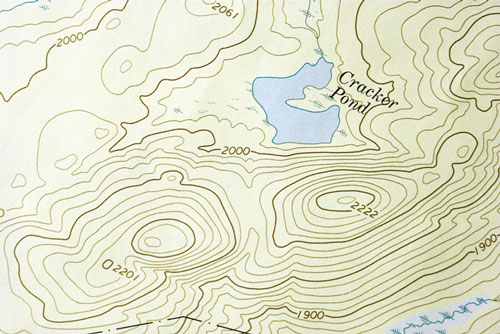Previously: Ask The Right Questions
Step 2: Maps, Maps And More Maps
 “That’s a lot of information to sift through,” says Miraglia, “but if you study it for a while, it should help you pick a general hunting site or two. Then it is all a matter of getting the right maps. Not only topographical maps but plat or tax maps and black and white aerial photos, too. These will give you a general feel for the lay of the land and also help you locate the terrain features and ground cover that promote deer activity.”
“That’s a lot of information to sift through,” says Miraglia, “but if you study it for a while, it should help you pick a general hunting site or two. Then it is all a matter of getting the right maps. Not only topographical maps but plat or tax maps and black and white aerial photos, too. These will give you a general feel for the lay of the land and also help you locate the terrain features and ground cover that promote deer activity.”
In farm country I pay close attention to those ravines and swamps mentioned earlier, but also focus on dry creekbeds, irrigation ditches and river banks in relation to active agriculture, and any slight dip in the land’s surface that may funnel deer to your position. Hidden fields should also be of major interest, as should woodlots and untillable land between those fields.
Deer are harder to locate in the big woods simply because there are no large open fields or housing projects to steer bucks into blocks of woods and other easily recognizable strongholds. Nonetheless, a few hours with the photos and maps, and you should be able to locate some likely looking areas.
One big-woods feature I always look for is a small opening in the forest canopy. These show up quite readily on aerial photos, and are often the result of logging practices, abandoned farmsteads, and old mining operations as well as natural rockslides and dried up sloughs. Why are these openings worth your consideration? That’s easy. Deep-woods deer need open spaces as much as their farmland brethren do.
One of the hottest spots I ever bowhunted was a half-mile stretch of an abandoned logging road that ran parallel to a 20-year-old clear-cut. If there were bucks in the area, you could bet there would be scrapes and scrape lines on that old road. If not for the aerial photos, I would have never found that deer magnet!
Besides these openings, study your maps for powerline rights-of-way, firebreaks, and large bodies of water that can offer both access and critical “edge.” If you can hunt during the rut, look for spurs, slopes, saddles, and “choppy” or uneven terrain. These are good places to ambush rut-crazed bucks as they travel about in search of does in heat. Keep in mind that the biggest bucks are often found at or near the tops of the highest peaks.
Next: High-Tech Scouting






